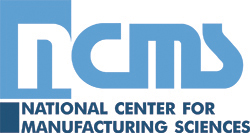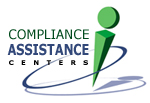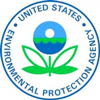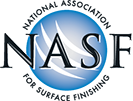Historical Articles
March, 1954 issue of Plating
Industrial Waste Control
D. Gardner Foulk, Manager of Electrochemical Research, Hanson Van-Winkle Munning Co., Matawan, NJ
Both the technical and lay press currently are devoting considerable linage to pollution problems. At the same time pressure is increasing throughout the country for abatement, both with respect to effluents emptied into streams and municipal sewage systems and gases and their entrained solids and liquids spewed into the air. Fortunately, the latter problem is not a serious one for the - electroplating industry, so that developments in air pollution will not be covered in this short review.
NTTCIW Meeting
At a recent meeting of the National Technical Task Committee on Industrial Wastes, it was reported that there were 405 research projects currently under way on waste problems. Of these, 131 were sponsored by industry, 180 by universities and research foundations and 94 by government agencies. This very considerable amount of research—and the report was by no means complete—testifies to the effort being devoted to the problem of stream pollution abatement. In the metal finishing field there are a number of research projects specifically directed towards waste treatment problems. These include AES Project No. 10, and work sponsored by the Metal Finishing Action Committee of the Ohio River Valley Water Sanitation Commission, including a literature study of the toxicity limits of metal finishing wastes to man, animals and aquatic life which is being evaluated by the Kettering Laboratory and the Aquatic Life Advisory Committee (ORSANCO). Other projects include studies on the toxicity of complex cyanides to fish at the Environmental Health Center, Cincinnati, Ohio, aluminum plant effluents at the State College of Washington, the concentration of metal ions and the regeneration of magnesium pickling solutions at the University of Detroit and the effect of plating wastes on the operation of sewage treatment plants at Michigan State College and Ohio State University. In addition, a number of studies have been made by (1) companies which have found it necessary to take steps to eliminate pollution and by (2) suppliers to industry of waste disposal equipment.Functions of the NTTCIW
The National Technical Task Committee on Industrial Wastes came into being as the result of the passage of the Federal Water Pollution Control Act (PL 845) in 1948. The Task Committee provides the means for industry cooperation in the matter of water pollution control. It consists of representatives of those industries which have an industrial waste problem— from automotive to rubber and including electroplating and metal finishing. The functions of the committee are:
- To inventory, appraise, coordinate and promote research and development work on utilization, treatment and control of industrial wastes.
- To facilitate securing uniformity in methods of measuring and evaluating trade wastes in water quality control.
- To stimulate more effective working relationships on technical phases of the work of improving the quality of waters between industry and federal, state and local government agencies.
- To help point up the activities on industrial wastes of the Environmental Health Center.
- To aid in establishing, where major needs exist, for any grants-in-aid for obtaining basic information relative to taking care of the industrial waste problems in water pollution control.
- To stimulate further adoption of practical methods now known and to be developed for minimizing and treating wastes in effecting stream improvement.
- To secure wide dissemination of information on technical progress and what is being accomplished by various branches of industry, maintain suitable contacts with technical societies, professional organizations, trade associations and other such groups issuing publications that reach those concerned with pollution problems.
- To aid in promoting such training activities as necessary to facilitate efficient operation of waste recovery and treatment systems in industry.
- To perform such other technical tasks pertaining to industrial effluents as appropriate to stimulate improvement in the quality of the water resources of the nation.
The NTTCIW has contributed much towards solving the problem of water quality control. Quoting Mr. L. A. Danse of the General Motors Corp., one of the leaders in the electroplating field on the problem of industrial waste control, ”Industry functioning is in high gear and is really making progress. The Task Committee is largely responsible for the improved conditions.”
Trends in Waste Disposal Control
Trends in the field of electroplating and metal finishing continue to be:
- The reduction of the quantity of waste.
- The conservation of water.
The reduction of the quantity of wastes has been accomplished by the use of save rinses, elevation of conveyor carrier arms for a number of stations at the end of the plating tank with or without fog rinses, the use of ion-exchange systems and in some cases by enlisting the aid of the design engineer to provide for drainage from the part thus to minimize drag-out.
The conservation of water has been accomplished by use of ion-exchange equipment, the use of spray rinsing, injection of air into rinse tanks, and the use of only as much water as is shown to be required.Work of ORSANCO
The Ohio River Valley Water Sanitation Commission has probably done more towards solving the problem of stream pollution in the last five years than any other body. Established as the result of an eight state compact approved by the Congress of the United States, ORSANCO already has completed investigations, held hearings, adopted regulations for sewage discharges and issued notices of compliance for half the 981-mile Ohio River. On the industrial front progress also has been made. Of the 1,247 industries discharging directly into Ohio River valley streams, 817 are now operating control facilities, 31 are constructing facilities and 117 are completing plans for waste treatment works. Substantial quantities of industrial waste are, of course, being treated in municipal disposal plants. As a matter of policy, the Ohio River Valley Water Sanitation Commission recognizes that the industries of the area have a major stake in the water resources of the region and at the start encouraged the formation of industry-advisory committees. The Metal Finishing Committee has prepared four manuals* as follows: ”Planning and Making Industrial Waste Surveys,” ”Plating Room Controls for Pollution Abatement” (1951), ”Methods for Treatment of Metal-Finishing Wastes” (1953) and ”Methods for Analysis for Metal Finishing Wastes” (on press’. For the last publication some of the preliminary analytical studies were done by AES Project No. 2 under Dr. Serfass at Lehigh University and the final methods were developed there under an ORSANCO grant and are being published only after industrial field tests were made.The method used to combat pollution in the Ohio River valley appears to be setting a pattern. A seven state compact has been proposed to curb pollution in the waters of the Tennessee River basin. Another is proposed for the Sabine River basin involving Texas and Louisiana. Other bodies include Incodel (Delaware River), the New England Interstate Water Pollution Commission and the International Joint Commission (United States and Canada).
Stale and Federal Legislation
Recent legislative action includes a Connecticut law forbidding a company to create a new source of pollution without obtaining a permit. The Illinois legislature authorized the organization of surface water protection districts and Indiana’s Stream Pollution Control Board has approved industrial plans to prevent the accidental discharge of cyanide solutions. In view of the general trend to require abatement of surface water pollution three bills being considered by Congress (H.R. Nos. 234, 606, 2535) are of particular interest. All three of these bills propose that industrial waste treatment works be charged off for tax purposes at an accelerated rate in order to encourage the prevention of water pollution.The Water Pollution Control Act of 1948 recognized the right of the States to control pollution. Consequently, legal requirements vary from state to state. The trend is, however, to base control upon the concept that water pollution should not be allowed to interfere with water uses important to an area. This has been variously called ”total use,” ”best use” and ”most appropriate use,” but, whatever the name chosen, it is necessary to obtain a full knowledge of the stream before the problem can be adequately defined and a program formulated. This points up also the importance of the condition of the river at the point of effluent emptying as well as possible recovery by the time the water has reached any given point downstream. As a result of the ”most appropriate use” concept the ”stream classification” device has been adopted by many states as an administrative assist.
Other terms used in recently adopted legislation and regulations include ”objectives,” ”criteria” and ”standards.” ”Objective” denotes the goal of a program administration, suggesting a desirable end to be met. The word ”standard” has a more rigid legal connotation and carries with it the idea of immediate legal compliance. However, the actual rigidity of many of the standards set up is open to some question because of the general statements often employed which are not usually included in standards. This, of course, is the result of insufficient technical data at hand to permit the establishment of standards. It is heartening to note a tendency to use the word ”objective” which gives the flexibility necessary for the ”most appropriate” use concept and for changing conditions. ”Criteria” denote a method of measurement or a means of forming a judgment. It is in this area particularly where the lack of data or the existence of conflicting technical data or both make for difficulty. It is in this area, too, that industry, industrial associations, technical societies and government agencies can develop the necessary knowledge to make for a realistic solution of the industrial waste disposal problem. For this reason and thus reflecting the progressive thinking of past and present AES Executive Boards, the American Electroplaters’ Society has made an effort to cooperate with interstate and federal agencies concerned with industrial waste problems.
 |
 |
 |
 |
 |
| Home | Subscribe | Regulations | Compliance Assistance | News | Resources | Resource Locators | Directories | Online Training | About | Search | NASF.org |
The information contained in this site is provided for your review and convenience. It
is not intended to provide legal advice with respect to any federal, state, or local regulation.
You should consult with legal counsel and appropriate authorities before interpreting any
regulations or undertaking any specific course of action.
Please note that many of the regulatory discussions on STERC refer to federal
regulations. In many cases, states or local governments have promulgated relevant rules and
standards
that are different and/or more stringent than the federal regulations. Therefore, to assure full
compliance, you should investigate and comply with all applicable federal, state and local
regulations.

